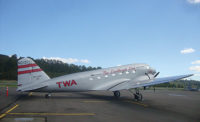This year marks the 50th anniversary of ASSEMBLY magazine. Since the publication debuted in the late 1950s, we have provided in-depth coverage of key trends, issues and challenges affecting the wide world of welding. Here's a look at how welding technology has changed over the last 5 decades.
This year marks the 50th anniversary of ASSEMBLY magazine. Since the publication debuted in the late 1950s, we have provided in-depth coverage of key trends, issues and challenges affecting the wide world of welding. ASSEMBLY is proud of this heritage, and we will continue to be one of the world’s leading resources for welding technology in the future.
We recently asked a group of experts to share their thoughts on the past, present and future of industrial welding. Participants includedHarvey Castner, technology leader for arc welding at the Edison Welding Institute (EWI, Columbus, OH);Janet Devine, president of Sonobond Ultrasonics (West Chester, PA);Ken Holt, applications manager at Herrmann Ultrasonics Inc. (Bartlett, IL);Rohit Khanolkar, senior engineer at Applied Manufacturing Technologies Inc. (Orion, MI);Rodger Martin, vice president of sales at Branson Ultrasonics Corp. (Danbury, CT); andMike Sharpe, director of materials joining at FANUC Robotics America Inc. (Rochester Hills, MI).
ASSEMBLY:How has welding changed over the last 50 years?
CASTNER:Welding and material joining in 2007 is more automated, productive, and safer than 50 years ago. In 1957, there were no lasers, no microprocessors, no Internet, no industrial robots and none of the advanced materials that are available today.
Increases in productivity in the use of arc welding processes have been dramatic in the last 50 years. The manual shielded metal arc welding process was the most widely used arc welding process in 1957 since gas metal arc welding and flux cored arc welding (patented in 1957) were still in their infancy. Today, the semiautomatic gas metal arc welding and flux cored arc welding processes are much more widely used for production than the manual shielded metal arc welding process. These processes can double productivity compared to manual shielded metal arc welding, due to increased deposition rates and operator factors.
New processes, such as electron beam welding, friction welding, plasma arc welding, friction stir welding, explosion welding and laser beam welding, have increased the range of materials and components that can be welded. Most of these processes are fully automated and computer controlled, making them highly productive. All of these processes are new to manufacturing since 1957.
The ability of electron beam welding to produce single-pass welds with excellent properties in materials such as titanium and ultra-high strength steels permitted it to find applications in aircraft structure as well as jet engine manufacture. The B-70 bomber built in the 1960s is one early example of the use of electron beam welding. Today, the Air Force’s F22 fighter, as well as commercial aircraft, contain welded structure. Laser technology has been applied to improve the quality and productivity of both cutting and joining for a wide range of materials and products from electronics and medical devices to automotive and aerospace components.
Industrial robots and computer-controlled automated welding systems are used today to improve both quality and productivity of welding operations for a wide range of applications from aerospace to heavy-duty manufacturing. Industrial robots, first applied to material handling in manufacturing in 1961, were adapted to positioning spot welding guns in the automotive industry. In 1957, spot welding guns were manually positioned. Today, they are manipulated by robots on fully automated production lines. This has reduced labor costs and dramatically increased productivity.
Technology advanced to arc welding applications in the late 1970s and early 1980s. Computers, advanced communications technology and the Internet have advanced the ability of welding industry to exchange information, perform advanced modeling, and control automated facilities faster and more economically.
Integrated solid-state circuits, microprocessors, laser vision systems, and advances in data storage and transmission, have all been developed since 1957. They have improved the capabilities of welding power sources, programmable automated systems, and inspection equipment that provide some of today’s most advanced welding technology. This technology is used to manufacture aircraft engines, nuclear power for naval ships, advanced military and commercial aircraft, offshore oil production and numerous consumer products.
The development in materials, and in our understanding of material properties and the ability to apply computer analysis and models, has improved the performance, extended the life and reduced the cost for consumer products, as well as structures and machinery. Certainly the space program, nuclear weapons, nuclear power, and advanced aircraft have fostered the development of advanced materials and processes to join them. This includes high-strength titanium and aluminum alloys, as well as composite and plastic materials. One example is the use of variable polarity plasma arc welding to join liquid oxygen and hydrogen fuel tanks used in the space shuttle program.
DEVINE:Ultrasonics has changed in two significant ways over the past half-century. First, it has changed in terms of the electronics and controls involved. Second, it is now being used in many new industries and applications.
In addition to obvious improvements in terms of weight and size, the field has changed dramatically through such other improvements as automatic tuning, microprocessor control of time, energy or distance, and the ability to store or weld data for SPC. Early equipment used magnetostrictive transducers (converters). Today, the transducers use piezoelectric crystals. These are more consistent and easier to drive electronically. The cost-effectiveness of ultrasonic welding has also been improved by better controls and less need to rely on the skills of the welding unit’s operator.
Many more materials and applications now exist than 50 years ago, and these have been adapted for welding by ultrasonic energy. As a result, the variety of industries using ultrasonic welding has grown by leaps and bound.
HOLT:The application of ultrasonic welding has grown exponentially as the acceptance, integration and engineering theory and practice of plastic raw material and plastic products have increased.
The flexibility of ultrasonic welding has expanded as more has been learned regarding the acoustical behavior of different sonotrode shapes and sizes. This has translated into more and more usage of the process in various parts. Sonotrode design and manufacture has evolved to allow the use of ultrasonics on larger, complex and highly curved surfaces. For example, initially small flat parts were welded. Currently, highly curved parts are the norm. [At the same time], industrial design has evolved and matured.
Higher throughput of the ultrasonic welding process is not only due to electronic, pneumatic and mechanical advances of this machinery but also due in large part to advances in supporting technologies such as robotics, PLC programming, sensor technologies and leak testing.
Assembly machine design has evolved to a high degree over the lifespan of ultrasonic welding. A symbiotic relationship has existed with all other types of assembly machine technology.
The evolution of design of experiments (DOE) has made industrial assembly, particularly in the medical field, more robust. These techniques have driven the understanding of the process to a higher level. As this has occurred, machine manufacturers have responded with better I/O devices and general technology.
The development of different frequency output generators and converters has allowed the use of ultrasonics with different sizes of parts. Initially, 20kHz. equipment was only available for use with parts about hand size or smaller but may be too aggressive for smaller parts. Higher frequency equipment, such as 35 and 40 kHz. devices, allows ultrasonic welding technology to be used on very small, delicate parts. On the other end of the spectrum, 15kHz. equipment allows larger parts to be processed.
KHANOLKAR:Spot welding has become one of the primary assembly operations in manufacturing plants where metal panels are assembled together. The main reason for this is the simplicity of the process, the large variety of inexpensive and standard equipment, and the use of robots to perform accurate and reliable welding processes.
During the past 50 years, welding technology has improved dramatically due to the use of robots and improvements in welding equipment. Welding parameters, such as hold and squeeze time, have also improved due to a better understanding of metal composition and strength. Metal objects ranging from complex automotive bodies to simple buckets have been designed and manufactured with welding technology at the forefront of the production process.
MARTIN:Since the first patent for ultrasonic welding was issued more than 40 years ago, the basic principles have remained the same. What has changed is the fact that the level of process control has made ultrasonics a more desirable assembly process within the manufacturing community. Ultrasonics, as an assembly method, is regularly incorporated into product designs today.
Engineers are more comfortable designing for the process, even designing welds specifically for ultrasonic applications. In addition, ultrasonic equipment has become more nimble and responsive to industry needs. Things such as power, frequency and tooling design (especially with the availability of FEA design) have changed over the years as customer requirements have changed. Many products are now made from plastics that previously were made from other materials.
SHARPE:The post-war era saw the introduction of many new processes as a result of war-time build up. Many of these directly moved to the production lines of the automotive industry, including improved joining methods such as MIG/MAG welding. While many of these remained manually operated machines, the advent of robots in the 1960s ushered in change to automated production lines.
Maintenance costs have come down, as electric motors are inherently more reliable that hydraulic. Application programming tools, such as circular motion and coordinated motion (simultaneous control of the robot and positioner), were unheard of at the dawn of early robots. Programmers had to finesse the robot to achieve the desired weld path. Many times, they were not effectively applied and failed installations resulted. It’s not that the early robot developers didn't have the knowledge or foresight. The technology just wasn't available.
Today, times have changed, with improved computer processing power and digital servos. Robots now are quite intelligent with unmatched quickness and reliability. Autonomy to control and react to faulted conditions is the norm, with robots able to make decisions to keep production running. Higher reliability AC servo motors with digital control allow the robot to react to environment changes such as arm loads, arm posture and collisions allowing for maximum throughput and uptime.
High-performance acceleration control reduces the non value air-cut time (when you are not welding, you are not making production), and routines to monitor the weld quality are now built-in. Application processes like arc welding are designed in robots from the manufacturers, including welding network control of the arc welding power supply and wire feeder. Also, peripheral equipment has been homogenized within the robot arm with through-the-arm torch cable robots providing ease of programming, improved part accessibility and longer maintenance intervals.
Control of 30 to 40 axes is common among robot manufacturers, as the cost of computing power and memory allows for four robot arms to be controlled from one CPU and teach pendant. The result is integration cost savings and increased arc density with simplified programming (more robots and arcs per part can be closely coordinated). Vision (now integrated within the robot controller) is also available to quickly locate mispositioned parts before joining, saving in tooling costs and improving quality.
Robot controllers have been ported to the PC so users can have desktop control of a virtual arc welding robot. The perfect work angle and travel angle can be programmed with a just few mouse clicks, reducing the requirements for a skilled weld programmer. This, coupled with the through-arm torch cable robot, allows users to quickly create paths off-line and then down-load and run them on the actual machine, maximizing robot up-time.
Get our new eMagazine delivered to your inbox every month.
Stay in the know on the latest assembly trends.
SUBSCRIBE TODAY!Copyright ©2024. All Rights Reserved BNP Media.
Design, CMS, Hosting & Web Development :: ePublishing


